|
Books Should Be Free Loyal Books Free Public Domain Audiobooks & eBook Downloads |
|
|
Books Should Be Free Loyal Books Free Public Domain Audiobooks & eBook Downloads |
|
Literature |
|---|
|
Book type:
Sort by:
View by:
|
By: Miriam Michelson (1870-1942) | |
|---|---|
 In the Bishop's Carriage
In the Bishop's Carriage
Nancy 'Nance' Olden, a young and very pretty woman, is an accomplished liar and thief. Raised in a horrific orphanage, called the Cruelty by its occupants, Nance and her criminal boyfriend, Tom Dorgan, are pulling a con when the book begins. The results of their act propel Nance into a series of events that she could never have imagined. This was Miriam Michelson's first novel and it was considered a 'blockbuster' in its day. Ranked fourth on the list of bestsellers of 1904 by "Publishers Weekly," Michelson's book was a source of controversy due to the dubious ethics and morals of its heroine. | |
By: Molière | |
|---|---|
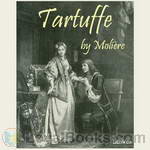 Tartuffe
Tartuffe
Jean-Baptiste Poquelin, known by his stage name Molière, was a French playwright and actor who is considered to be one of the greatest masters of comedy in Western literature. Among Molière's best-known works is Tartuffe or The Hypocrite, written in 1664. Though Tartuffe was received well by the public and even by Louis XIV, its popularity was lessened when the Archbishop of Paris issued an edict threatening excommunication for anyone who watched, performed in, or read the play.Tartuffe, a pious fraud who pretends to speak with divine authority, has insinuated himself into the household of Orgon... | |
By: Moliere (1622-1673) | |
|---|---|
 The Imaginary Invalid
The Imaginary Invalid
The Imaginary Invalid is a three-act comédie-ballet by the French playwright Molière. It was first performed in 1673 and was the last work he wrote. The plot centers around Argan, the 'imaginary invalid' who is completely dependent on his doctors and wants to marry his daughter to a doctor against her will, so that he will always have medical care freely available to him. In an ironic twist of fate, Molière collapsed during his fourth performance as Argan on 17 February and died soon after. | |
By: Montague R. James (1862-1936) | |
|---|---|
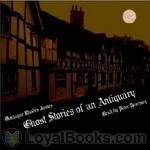 Ghost Stories of an Antiquary
Ghost Stories of an Antiquary
An English tourist in a small, rural town in the South of France discovers an ancient manuscript with a strange illustration on the last page. A young orphan is sent to live with his elderly cousin, a secretive man who is obsessed with immortality. A picture that tells stories that change according to who is viewing it. These and other delicious, goose bump evoking tales are part of Ghost Stories of an Antiquary by Montague R James. A master of his craft, MR James was an academic and administrator of King's College, Cambridge and later of Eton... | |
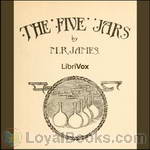 The Five Jars
The Five Jars
The Five Jars is the only novel written by James, who is best known for his ghost stories. It is a peculiarly surreal fantasy apparently written for children. While he is out walking, the narrator is drawn to a remote pool, and finds a small box that has been hidden since Roman times. He gradually learns how to use its contents, fighting off a series of attempts to steal it, and becomes aware of a strange world hidden from our own. | |
By: Morgan Robertson | |
|---|---|
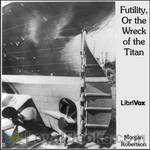 Futility, Or the Wreck of the Titan
Futility, Or the Wreck of the Titan
This novel was published a full 14 years before the sinking of the Titanic, but listeners may be surprised at how many parallels this fictional tale has with subsequent true events. The Titan is the largest and most technologically advanced steamship of her time. She is considered unsinkable. Her full speed crossings of the Northern Lane Route carry her rich passengers in the highest standards of luxury and comfort. The less well-off travel in rougher quarters but still benefit from the speed of travel... | |
By: Morley Roberts (1857-1942) | |
|---|---|
 Adventure of the Broad Arrow: An Australian Romance
Adventure of the Broad Arrow: An Australian Romance
When a few men decide to go for looking for gold in the outback of Australia, days of extreme heat with no water and no rain in sight, make them turn back and give up the trip; all but two of them that is, Smith and Mandeville, aka the "Baker. Smith and Baker decide to tough it out and go after their dreams, chancing their lives to find "their luck". Little do they realize, they will put their lives in grave danger, and this quest for gold will turn into a nightmare. Life threatening food and water deprivation is a constant issue, and they had no idea they would stumble upon an unknown tribe of prehistoric white men that are head hunters and cannibals... | |
By: Mrs Charles Bryce (1839-1920) | |
|---|---|
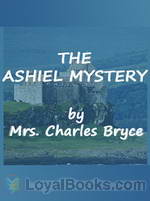 The Ashiel Mystery - A Detective Story
The Ashiel Mystery - A Detective Story
Just as the adopted Juliet Byrne finds out the truth about her family, her father is murdered. Luckily the brilliant chocolate-munching Detective Gimblet takes up the case to solve the 'Ashiel Mystery' | |
By: Mrs. Henry Wood (1814-1887) | |
|---|---|
 East Lynne
East Lynne
Ellen Wood (1814-1887) was an English novelist, better known as Mrs. Henry Wood. She wrote over 30 novels, many of which (especially East Lynne which was a Victorian best seller and is still sometimes performed as a drama) enjoyed remarkable popularity. Lady Isabel Carlyle, a beautiful and refined young woman, leaves her hard-working but neglectful lawyer-husband and her infant children to elope with an aristocratic suitor. After he deserts her, and she bears their illegitimate child, Lady Isabel disguises herself and takes the position of governess in the household of her husband and his new wife". Summary by Wikipedia | |
By: Mrs. O. F. Walton (1849-1939) | |
|---|---|
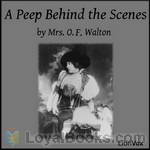 A Peep Behind the Scenes
A Peep Behind the Scenes
Rosalie is the daughter of a traveling theater master and is envied by many young girls as she appears to live a life full of glamour, glitz, and glory. But beneath the happy smiling face is a hurting heart, a deep sorrow for her dying mother, and a wretched life. Follow Rosalie as she learns of the Good Shepherd who loves and cares for her, and begins to trust Him for daily strength. | |
By: Murray Leinster (1896-1975) | |
|---|---|
 The Aliens
The Aliens
This story starts with space ships scouring the universe in an interplanetary game of tag. The humans know there are “Aliens” out there. But so do the Aliens. As each tries desperately to make the phenomenal discovery, they secretly hope that the other will not turn out to be the enemy. Humans call them “Plumies” because of the feathery plumes they inscribe on silicon-bronze tablets and cairns they have left behind on their intergalactic travels over the last thousand years. The search goes on, till one day somewhere in outer space, a Plumie ship collides with the one manned by humans... | |
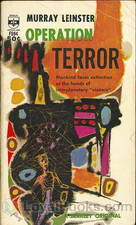 Operation Terror
Operation Terror
An unidentified space ship lands in a Colorado lake. Equipped with a paralyzing ray weapon, the creatures begin taking human prisoners. A loan land surveyor and a journalist are trapped inside the Army cordon, which is helpless against the mysterious enemy. Can they stop the aliens before it is too late? | |
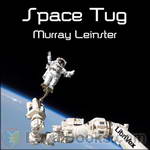 Space Tug
Space Tug
Joe Kenmore heard the airlock close with a sickening wheeze and then a clank. In desperation he turned toward Haney. “My God, we’ve been locked out!” Through the transparent domes of their space helmets, Joe could see a look of horror and disbelief pass across Haney’s face. But it was true! Joe and his crew were locked out of the Space Platform. Four thousand miles below circled the Earth. Under Joe’s feet rested the solid steel hull of his home in outer space. But without tools there was no hope of getting back inside. Joe looked at his oxygen meter. It registered thirty minutes to live. | |
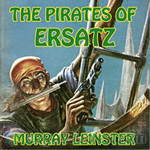 The Pirates of Ersatz
The Pirates of Ersatz
Bron is the offspring of infamous space pirates but instead of following in the family footsteps he decides to become an electronic engineer. Unfortunately, every time he tries to get out, something pulls him back in. This is a tongue-in-cheek space adventure along the lines of the Stainless Steel Rat by Harry Harrison. It was originally published in the FEB-APR issues of Astounding Science Fiction in 1959. | |
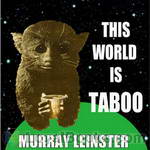 This World Is Taboo
This World Is Taboo
Calhoun is an Interstellar Medical Serviceman, and he's needed on Dara. Trouble is: Dara is forbidden. Taboo. And breaking quarantine will make Calhoun a presumed plague-carrier and subject to being shot on sight by anyone from Weald. But hey! If he did the smart thing, we wouldn't have a story!But why are men from Dara shooting at him? | |
 Talents, Incorporated
Talents, Incorporated
Bors felt as if he'd been hit over the head. This was ridiculous! He'd planned and carried out the destruction of that warship because the information of its existence and location was verified by a magnetometer.But, if he'd known how the information had been obtained--if he'd known it had been guessed at by a discharged spaceport employee, and a paranoid personality, and a man who used a hazel twig or something similar--if he'd known that, he'd never have dreamed of accepting it. He'd have dismissed it flatly! | |
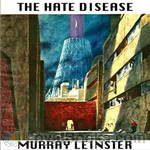 The Hate Disease
The Hate Disease
Dr. Calhoun and his pet tormal Murgatroyd work for the Interstellar Medical Service making routine public health inspections on far-flung colonial planets. When they reach Tallien Three they are greeted with a rocket attack by the Paras, a mutated form of human rapidly replacing the “normals”. The normals think it’s a pandemic of demonic possession but Calhoun has his doubts. If he can keep from turning into a Para, or being assassinated by them he just might figure this thing out. – The Hate Disease was first published in the August 1963 edition of Analog Science Fact and Fiction magazine. | |
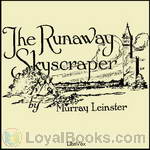 The Runaway Skyscraper
The Runaway Skyscraper
Arthur Chamberlain has problems. His one-man engineering firm is faltering and his pretty secretary Estelle barely notices him. But these problems are put aside when his Manhattan office building falls into the fourth dimension. Madison Square is filled with wigwams and it’s up to Arthur to engineer a way to make his building to fall back to the future. – The Runaway Skyscraper first appeared in the February 22, 1919 issue of Argosy magazine. | |
 Operation: Outer Space
Operation: Outer Space
Jed Cochrane is about to take off on man's first interstellar voyage. His mission: Make sure it's good television! (Introduction by Mark Nelson) | |
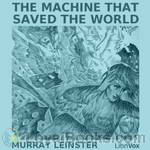 The Machine that Saved the World
The Machine that Saved the World
They were broadcasts from nowhere--sinister emanations flooding in from space--smashing any receiver that picked them up. What defense could Earth devise against science such as this? In the far future of 1972, on a secret military installation, Staff Sergeant Bellews is an expert on the latest scientific discovery: a way for ordinary machines like vacuums and lawnmowers to gather experience in their jobs, becoming error free over time. Then the strange broadcasts began to blow up transmitters everywhere. Were they from space? Enemies? the future? He didn't care until they started messin' with his machines. Then he took it personally. (summary from the first chapter and Phil Chenevert) | |
 The Ambulance Made Two Trips
The Ambulance Made Two Trips
Big Jake Connors is taking over his town through violence, inimidation and bribery but Detective Sergeant Fitzgerald can only grind his teeth in frustration. The gangsters seem to have everything going their way until the day that a little dry cleaning establishment declines their offer of 'protection' and strange things start to happen. Murray Leinster gives us another wonderful product of 'what if' from his limitless imagination to enjoy in this gem of a story. Listen and smile. | |
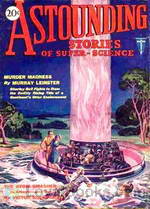 Murder Madness
Murder Madness
Murder Madness! Seven Secret Service men had completely disappeared. Another had been found a screaming, homicidal maniac, whose fingers writhed like snakes. So Bell, of the secret "Trade," plunges into South America after The Master--the mighty, unknown octopus of power whose diabolical poison threatens a continent! | |
 Space Platform
Space Platform
SPACE PLATFORM tells the exciting story of a young man helping to build this first station. With scientific accuracy and imagination Murray Leinster, one of the world's top science-fiction writers, describes the building and launching of the platform. Here is a fast-paced story of sabotage and murder directed against a project more secret and valuable than the atom bomb! | |
By: Myrtle Reed (1874-1911) | |
|---|---|
 Lavender and Old Lace
Lavender and Old Lace
“Jane Hathaway and her niece, Ruth Thorne, have never met. Jane invites Ruth for a visit, but leaves before Ruth comes. Ruth agrees to come to Jane for quiet and rest. When Ruth arrives, the maid gives her a letter from her aunt. In the letter, Aunt Jane does not tell Ruth anything about her trip abroad but insists that Ruth light an oil lamp in the attic each night. Very soon, the all together forgotten past and the steady present are united.” | |
 At The Sign of The Jack O'Lantern
At The Sign of The Jack O'Lantern
This begins with an odd inheritance at the end of a honeymoon, both parties being inexperienced. Then someone comes to visit, then another, until we've got a chaotic bedlam of New England's tragically off the wall odd-ball relations. Our protagonists may not communicate efficiently at first but at least they've got a sense of humours. The humourous style keeps up as well as some moments of lustre and rich feeling about the printed word itself. (Introduction by D. Wor) | |
 Old Rose and Silver
Old Rose and Silver
The novel follows the lives of Rose and her widowed Aunt, Madame Francesca Bernard, along with young visitor and cousin Isabel, whose lives are changed by the return of an old friend and neighbour Colonel Kent, and his grown son, Allison. Other characters that help shape their lives in significant ways are the Crosby twins, unconventional and uninhibited youths that set society at naught, and an unconventional doctor who specializes in the impossible. Through the limited "wide-scope" descriptions... | |
By: Natalie Sumner Lincoln (1881-1935) | |
|---|---|
 The Red Seal
The Red Seal
Nothing is what it seems to be as events unfold in this entertaining mystery by Natalie Sumner Lincoln. Red seals and red herrings abound and will keep you guessing all the way through the final chapter! | |
By: Nathaniel Hawthorne (1804-1864) | |
|---|---|
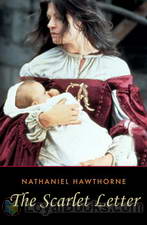 The Scarlet Letter
The Scarlet Letter
A beautiful woman who is punished for the mortal sin of loving a man other than her husband, a cowardly lover, a vengeful husband, a rebellious illegitimate child and the oppressive and patriarchal morality of 17th century Puritanism in Boston. Together these form an unforgettable and thought-provoking glimpse of how much social attitudes have changed over the centuries. Nathaniel Hawthorne was the creator of such beloved works as Twice-Told Tales, A Wonder Book for Boys and Girls, The House of the Seven Gables and spine-chilling tales like Roger Malvin's Burial... | |
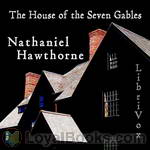 The House of the Seven Gables
The House of the Seven Gables
“The wrongdoing of one generation lives into the successive ones and… becomes a pure and uncontrollable mischief.” Hawthorne’s moral for “The House of the Seven Gables,” taken from the Preface, accurately presages his story. The full weight of the gloomy mansion of the title seems to sit on the fortunes of the Pyncheon family. An ancestor took advantage of the Salem witch trials to wrest away the land whereon the house would be raised… but the land’s owner, about to be executed as a wizard, cursed the Pyncheon family until such time as they should make restitution... | |
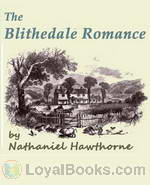 The Blithedale Romance
The Blithedale Romance
The Blithedale Romance is the story of four principal characters who work with -- and sometimes against -- each other on Blithedale, a communal farm antecedent to those that sprang up later in the 1960s, and similar to one on which Hawthorne himself lived in 1841. These communes arose out of the pressures on society and the individual brought by the Industrial Revolution. Some were organized around religious philosophies, some were secular. Among the secularists, the Transcendental movement mentioned in the novel espoused the idea that the individual's intuition, rather than religious dogma, was the true path to spiritual enlightenment... | |
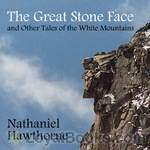 The Great Stone Face and Other Tales of the White Mountains
The Great Stone Face and Other Tales of the White Mountains
A collection of four short stories by Nathaniel Hawthorne, the common theme of which is New Hampshire's White Mountains. Consists of: The Great Stone Face, written in 1850 and revolves around the 'Old Man of the Mountain (Cannon Mtn.) in New Hampshire which sadly collapsed on May 3, 2003; The Ambitious Guest, written in 1835; The Great Carbuncle, written in 1837; and Sketches From Memory, written sometime prior to The Great Carbuncle as will become obvious. | |
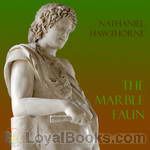 The Marble Faun
The Marble Faun
The Marble Faun is Hawthorne's most unusual romance. Writing on the eve of the American Civil War, Hawthorne set his story in a fantastical Italy. The romance mixes elements of a fable, pastoral, gothic novel, and travel guide. In the spring of 1858, Hawthorne was inspired to write his romance when he saw the Faun of Praxiteles in a Roman sculpture gallery. The theme, characteristic of Hawthorne, is guilt and the Fall of Man. The four main characters are Miriam, a beautiful painter who is compared... | |
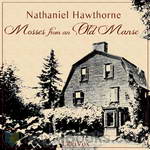 Mosses from an Old Manse
Mosses from an Old Manse
"Mosses from an Old Manse" is a short story collection by Nathaniel Hawthorne, first published in 1846. The collection includes several previously-published short stories and is named in honor of The Old Manse where Hawthorne and his wife lived for the first three years of their marriage. A second edition was published in 1854, which added "Feathertop," "Passages from a Relinquished Work, and "Sketches from Memory."Many of the tales collected in "Mosses from an Old Manse" are allegories and, typical of Hawthorne, focus on the negative side of human nature... | |
By: Neil Munro (1863-1930) | |
|---|---|
 Doom Castle
Doom Castle
Doom Castle is the story of young Count Victor's journey to Scotland after the Jacobite Rebellion, searching for a traitor to the Jacobite cause as well as a mysterious man under the name of "Drimdarroch", whom he swore revenge. After a perilious journey, Count Victor arrives at Doom Castle as a guest of the enigmatic Baron of Doom, his two strange servitors and his beautiful daughter... (Summary by Carolin) | |
By: Nella Larsen (1891-1964) | |
|---|---|
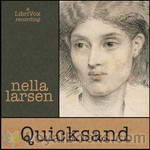 Quicksand
Quicksand
Quicksand is a 1928 novel by Nella Larsen, a writer of the Harlem Renaissance. It focuses on Helga Crane, a mixed-race woman who is a schoolteacher in the American south. As the novel opens, she suddenly decides to give up her teaching position and go north, back to her roots in Chicago. Helga's restless search for identity is semi-autobiographical, inspired by Larsen's own struggles to reconcile her mixed heritage with the racism of 1920s America. Although this novel was published after 1923, the copyright was never renewed and is therefore in the public domain. (Introduction by Elizabeth Klett) | |
By: Nicholas Rowe (1674-1718) | |
|---|---|
 Jane Shore: A Tragedy
Jane Shore: A Tragedy
Covering some of the plot of Shakespeare's Richard III, Jane Shore focuses on the mistress of the late Edward IV, also known as "The White Queen". In this short tragedy, Jane tries to thwart Richard's rise to power while experiencing love, betrayal, forgiveness, and an unexpected visitor who arrives in disguise. Cast ListLord Hastings: Tchaikovsky Duke of Gloster: ToddHW Belmour: Adrian Stephens Sir Richard Ratcliffe: Wayne Cooke Sir William Catesby: Alan Mapstone Dumont: Tomas Peter Jane Shore: Michele Eaton Alicia: WendyKatzHiller Jane's Servant: Larry Wilson Alicia's Servant: B. Jones Stage Directions: Adrienne Prevost | |
By: Nikolai Chernyshevsky (1828-1889) | |
|---|---|
 Vital Question, or, What is to be Done?
Vital Question, or, What is to be Done?
Despised by Dostoyevsky and Tolstoy, What Is To Be Done? is a fascinating, sympathetic story of idealistic revolutionaries in mid-nineteenth century tsarist Russia; translator Nathan Haskell Dole affirms in his preface his conviction that it is a thriller that no one can put down once s/he begins it. Its variegated cast of characters includes Vera Pavlovna, a boldly independent woman in a time of great oppression, and the inspirational radical Rakhmetov. The author wrote the novel from the depths of the infamous Peter & Paul Fortress of St... | |
By: Nikolai Leskov (1831-1895) | |
|---|---|
 Steel Flea
Steel Flea
An 1881 comic story by Nikolai Leskov, presented in the form of a traditional skaz or folk-tale, but entirely of Leskov's invention. It tells the story of a left-handed Russian artisan required to impress Tsar Nikolas I with his craftsmanship by outdoing some famous Englishmen who have created a tiny mechanical flea. The Russian smith barricades himself with two skilled colleagues in his workshop until finally forced to come out and reveal the brilliant result of his labor. Far more famous in Russia than in the West, the story of The Steel Flea reveals much about nineteenth-century Russian attitudes toward the West and toward their own country, but is difficult to categorize... | |
By: Nikolai Vasilievich Gogol (1809-1852) | |
|---|---|
 Taras Bulba; a Tale of the Cossacks
Taras Bulba; a Tale of the Cossacks
Taras Bulba is a romanticised historical novella by Nikolai Gogol set in Russia’s equivalent of America’s wild frontier, what is today Ukraine, a name which means something like “frontier” or “marches”. It was an ill-defined wild border land whose borders were subject to change and whose nominal rulers had allowed it to become a nuisance to them that it might also be a nuisance to the armies of their enemies and an obstacle to their advances. It was a time when men were men and sheep were scared and those men were Cossacks... | |
By: Norman Duncan (1871-1916) | |
|---|---|
 Christmas Eve At Swamp's End
Christmas Eve At Swamp's End
Four selected chapters from The Measure Of A Man; A Tale of the Big Woods, by Norman Duncan. What could be more Christmasy than: Babies, especially a homeless one; a woman who loves; a man who protects; a cold night; glittering stars; poor working-men witnesses; gifts. ( Title page and david wales) | |
By: O. Henry (1862-1910) | |
|---|---|
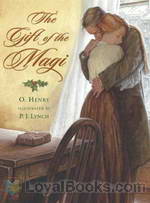 The Gift of the Magi
The Gift of the Magi
The Gift of the Magi is an O. Henry short story in which a young couple are very much in love with each other but can barely afford their one-room apartment. For Christmas, they each make a sacrifice to purchase a gift for the other, with ironic results. The moral of the story is that physical possessions, however valuable they may be, are of little value in the grand scheme of things. The true unselfish love that the characters, Jim and Della, share is greater than their possessions. O. Henry ends the story by clarifying the metaphor between the characters in the story, Della and James (or Jim), and the Biblical Magi... | |
 Cabbages and Kings
Cabbages and Kings
This work is O. Henry's first published volume and is considered to be his only novel. The plot is composed of several short stories, which were inspired by the author's six-month stay in Honduras in the late 1890s. "The incidents embracing as they do, a variety of subjects, hang loosely together, so loosely in fact, that at times one finds no apparent connection between them at all, and yet in the end one sees how each is intimately related to the other. ...Written by a less able hand than O. Henry's the book might have been a sad jumble, perhaps comprehensible to none but the Walrus--but as it is, one finds a joy in its every obscurity... | |
 Whirligigs
Whirligigs
A collection of short stories. | |
 Gentle Grafter
Gentle Grafter
If Jefferson "Parleyvoo" Pickens had appeared in print just a few years later, he might have been the "Gentle Grifter" instead of the "Gentle Grafter", the name O. Henry picked for him. His situation as an ethical graft artist gives Jeff an extra impediment in pursuing his craft, but he never wanted it to be too easy. The result is fourteen delightful tales for us and a number of new partners for him. With those partners (he always has at least one) he works his way through a number of confidence games... | |
 Heart of the West
Heart of the West
A collection of short stories by the legendary O. Henry. | |
 Waifs and Strays
Waifs and Strays
These 12 O. Henry stories all deal with waifs and strays in one way or another; people who have somehow become adrift in the current of life. Will they find their way on their own or be helped by kind hearted folk or perhaps, stay a waif and stray, somehow outside the normal life of society? All naturally have the wonderful O. Henry beautiful way with words and people. So if you are in the mood to enjoy some sensuous sounds and convoluted flowing phrases unique to William Sydney Porter, give these a listen. And of course the endings cannot ever be predicted. Ever! | |
 Options
Options
O. Henry needs no introduction of course; the man who made the short story with the surprise ending famous. These 16 stories are all wonderful examples of his word sculpting art. They include: "The Rose of Dixie"; The Third Ingredient; The Hiding of Black Bill; Schools and Schools; Thimble, Thimble; Supply and Demand; Buried Treasure; To Him Who Waits; He Also Serves; The Moment of Victory; The Head-Hunter; No Story; The Higher Pragmatism; Best-Seller; Rus in Urbe; A Poor Rule | |
By: Olive Schreiner (1855-1920) | |
|---|---|
 The Story of an African Farm
The Story of an African Farm
The novel details the lives of three characters, first as children and then as adults - Waldo, Em and Lyndall - who live on a farm in the Karoo region of South Africa. The story is set in the middle- to late Nineteenth century - the First Boer War is alluded to, but not mentioned by name. The book is semi-autobiographical: in particular, the two principal protagonists (Waldo and Lyndall) display strong similarities to Schreiner's life and philosophy. The book was first published in 1883 in London, under the pseudonym Ralph Iron... | |
 Dreams
Dreams
Olive Schreiner was a South African writer and intellectual born in 1855 to missionary parents in the Eastern Cape. She was one of the earliest campaigners for women's rights. She was also very critical of British Imperialism in her homeland and particularly of their racist policies against the Boers, Jews, Indians and the Black races of South Africa. As a result of her public support for the Boers, all her manuscripts and her house were burned during the Anglo-Boer War and she was interned in a concentration camp for several years... | |
By: Oliver Goldsmith (1728/1730-1774) | |
|---|---|
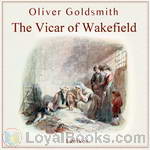 The Vicar of Wakefield
The Vicar of Wakefield
Published in 1766, The Vicar of Wakefield follows the turbulent shift in the fortune and status of the Primrose family, as they must endure various setbacks that threaten their ultimate wellbeing and prosperity. Focusing on themes including family, prudence, resilience, religion, deception, marriage, and social status, the classic is regarded as Goldsmith’s most notable literary achievement. The novel centers on Dr. Charles Primrose, a benevolent and naive vicar, who together with his wife and six children lives an idyllic and comfortable life in the affluent town of Wakefield, owing their position to a smart investment... | |
 She Stoops to Conquer
She Stoops to Conquer
In She Stoops to Conquer, or The Mistakes of a Night, a young lady pretends to be a servant in order to win the notice of a young man who is painfully shy around women of his own class. Hilarious misadventures and mayhem ensue before matters are neatly wrapped up at the end. This play, one of the great English comedies, was first performed in 1773 and continues to be very popular with audiences today. | |
By: Oliver Herford (1863-1935) | |
|---|---|
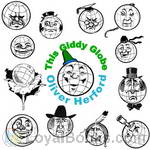 This Giddy Globe
This Giddy Globe
Is there a genre called FUN? Yes, and this is it! Insanely humorous geography that will have you rolling on the floor laughing with your sides hurting. | |
By: Oliver Wendell Holmes | |
|---|---|
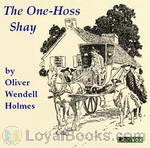 The One-Hoss Shay
The One-Hoss Shay
This is a small collection of whimsical poems by the American physician and author Oliver Wendell Holmes, Sr. "The Deacon's Masterpiece" describes the "logical" outcome of building an object (in this case, a two-wheeled carriage called a shay) that has no weak points. The economic term "one hoss shay," referring to a certain model of depreciation, derives its name from this poem. "How the Old Horse Won the Bet" is a lighthearted look at a horse race. Finally, "The Broomstick Train" is a wonderfully Halloween-y explanation of how an electric tram really works. | |
By: Oliver Wendell Holmes, Sr. (1809-1894) | |
|---|---|
 My Hunt After 'The Captain'
My Hunt After 'The Captain'
Holmes describes his frantic search through Civil War torn landscapes for his wounded son, the future Supreme Court Justice. Originally published in The Atlantic Magazine, 1862. Holmes, Sr. (1809 -1894) was an American physician, poet, professor, lecturer, and author. He was regarded by his peers as one of the best writers of the 19th century. His most famous prose works are the "Breakfast Table" series, which began with The Autocrat of the Breakfast Table (1858). He is also recognized as an important medical reformer. | |
By: Omar Khayyám (1048-1131) | |
|---|---|
 Quatrains of Omar Khayyám in English Prose
Quatrains of Omar Khayyám in English Prose
Justin Huntly McCarthy (1859 - 1936) was an Irish scholar, author and nationalist politician. In 1889 his prose translations of 466 quatrains of the Rubáiyát of Omar Khayyám was published by David Nutt. An abbreviated edition, containing a shorter introduction and translations of 373 quatrains, was published by David Nutt in 1898, and this has been used for the present recording. | |
By: Ontario Ministry of Education | |
|---|---|
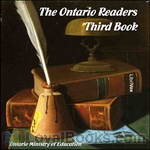 The Ontario Readers Third Book
The Ontario Readers Third Book
The Ontario Readers is a school book first published in 1909, by the Ontario Ministry of Education, containing short excerpts of literary works, both stories and poems, geared to grade-school age children. | |
By: Oscar Wilde (1854-1900) | |
|---|---|
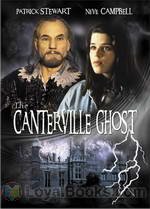 The Canterville Ghost
The Canterville Ghost
An American diplomat's family moves into an ancient stately mansion. They're warned by the owner that it is haunted by a most horrifying and gruesome spirit who had once cruelly murdered his own wife. The story progresses with creaking floor boards, mysterious passages, dark attics, clanking chains, and weird howling. Yet, the reader is totally unprepared for Oscar Wilde's brand of tongue in cheek humor as he takes all the ingredients of a traditional ghost story and turns it on its head, and creates a hilarious parody instead of a morbid saga! The Canterville Ghost was the first of Oscar Wilde's short stories to be published... | |
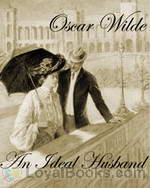 An Ideal Husband
An Ideal Husband
This story opens at a fashionable dinner party in Sir Robert Chiltern's home in the heart of London's stylish Grosvenor Square. One of Lady Chiltern's old school-friends, Mrs. Cheveley, a woman with a dubious past, accosts Sir Robert and threatens to expose a financial crime that he had once participated in, unless he agrees to finance a fraudulent construction project that she's promoting. Lady Chiltern is astounded when her husband who had been the severest critic of this project suddenly begins to speak in its favor... | |
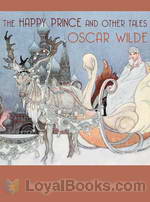 The Happy Prince and Other Tales
The Happy Prince and Other Tales
The Happy Prince and Other Tales (also sometimes called The Happy Prince and Other Stories) is an 1888 collection of stories for children by Oscar Wilde. It is most famous for The Happy Prince, the short tale of a metal statue who befriends a migratory bird. Together, they bring happiness to others, in life as well as in death. The stories included in this collection are:The Happy PrinceThe Nightingale and the RoseThe Selfish GiantThe Devoted FriendThe Remarkable RocketThe stories convey an appreciation for the exotic, the sensual and for masculine beauty. | |
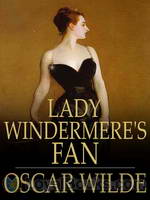 Lady Windermere's Fan
Lady Windermere's Fan
Lady Windermere’s Fan: A Play About a Good Woman is a four act comedy by Oscar Wilde, published in 1893. As in some of his other comedies, Wilde satirizes the morals of Victorian society, and attitudes between the sexes. The action centres around a fan given to Lady Windermere as a present by her husband, and the ball held that evening to celebrate her 21st birthday. | |